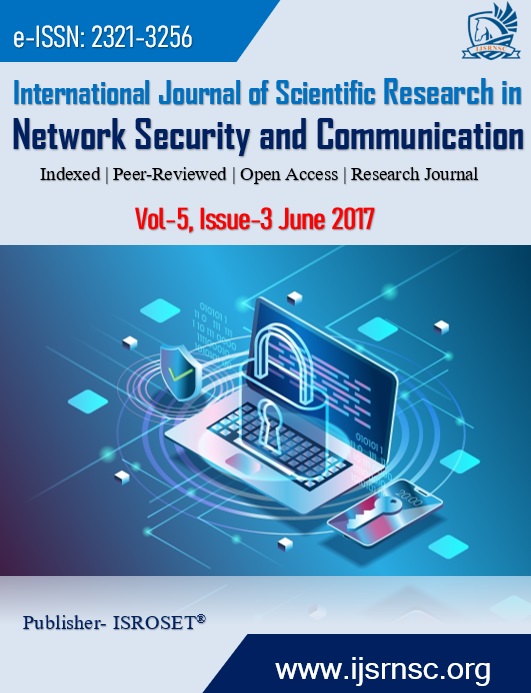Classification of a Retinal Disease based on Different Supervised Learning Techniques
Keywords:
Premature, infants, Retinopathy of Prematurity, Supervised Learning, TortuosityAbstract
This paper is based on classification of a retinal disease observed in premature infants named as “Retinopathy of Prematurity” (ROP). According to current market survey very few hospitals are associated in dealing with this disorder and is costly. So, the main aim here is to provide a simple yet effective MATLAB based algorithm for detection and classification of this disease. Here for computational purpose authors have used 30 affected and 30 normal images. These images are pre-processed using various MATLAB functions and commands and blood vessels are extracted. Later the tortuosity of these vessels is estimated and stored. These signals are further given to supervised learning classifiers, accuracy and error rate of the algorithm is estimated using different kernels.
References
S. Prabakar, K. Porkumaran, Parag K. Shah, V. Narendran, “Optimized Imaging Techniques to Detect and Screen the Stages of Retinopathy of Prematurity”, Human-Centric Machine Vision, India, pp.-12-19, 2012.
Faraz Oloumi, Rangaraj M. Rangayyan, Anna L. Ells, “Assessment of Vessel Tortuosity in Retinal Images of Preterm Infants”, 2014 36th Annual International Conference of the IEEE Engineering in Medicine and Biology Society, Chicago, IL, 2014, pp. 5410-5413.
Enea Poletti, Diego Fiorin, Enrico Grisan, “Automatic Vessel Segmentation in Wide-field Retina Images of Infants with Retinopathy of Prematurity” , 2011 Annual International Conference of the IEEE Engineering in Medicine and Biology Society, Boston, MA, 2011, pp. 3954-3957.
Lijuan Liu, Bo Shen, Xing Wang, “Research on Kernel Function of Support Vector Machine”, Advanced Technologies, Embedded and Multimedia for Human-centric Computing, China, pp. 827-834, 2014.
M Cord, P Cunningham, “Machine learning techniques for multimedia: case studies on organization and retrieval”, Springer Science & Business Media, GErmany, pp.1-289, 2008.
B. Boser, I. Guyon, V. Vapnik, “A training algorithm for optimal margin classifiers”, in Proceedings of the 5th Annual ACM Conference on Computational Learning Theory, USA, pp.144-152, 1992.
Vladimir Vapnik, “The Nature of Statistical Learning Theory”, Springer Science and Business Media, Germany, pp.1-314, 2013.
V. N. Vapnik, “Statistical Learning Theory”, Publishing House of Electronics Industry, China, pp.45-112, 2004.
V. N. Vapnik, “The Nature of Statistical Learning Theory”, Springer Press, Germany, pp.331-340, 1995.
T Joachims, “Learning to classify text using support vector machines: Methods, theory and algorithms”, Journal Computational Linguistics archive, Vol.29, Issue.4, pp.655-664, 2002.
A. Shrivastava, S. Rajawat, “An Implementation of Hybrid Genetic Algorithm for Clustering based Data for Web Recommendation System”, International Journal of Computer Sciences and Engineering, Vol.2, Issue.4, pp.6-11, 2014.
S.A. Angadi, M.M. Naravani, “Predicting Heart Attack Using NBC, k-NN and ID3”, International Journal of Computer Sciences and Engineering, Vol.2, Issue.7, pp.6-12, 2014.
Downloads
Published
How to Cite
Issue
Section
License

This work is licensed under a Creative Commons Attribution 4.0 International License.
Authors contributing to this journal agree to publish their articles under the Creative Commons Attribution 4.0 International License, allowing third parties to share their work (copy, distribute, transmit) and to adapt it, under the condition that the authors are given credit and that in the event of reuse or distribution, the terms of this license are made clear.









